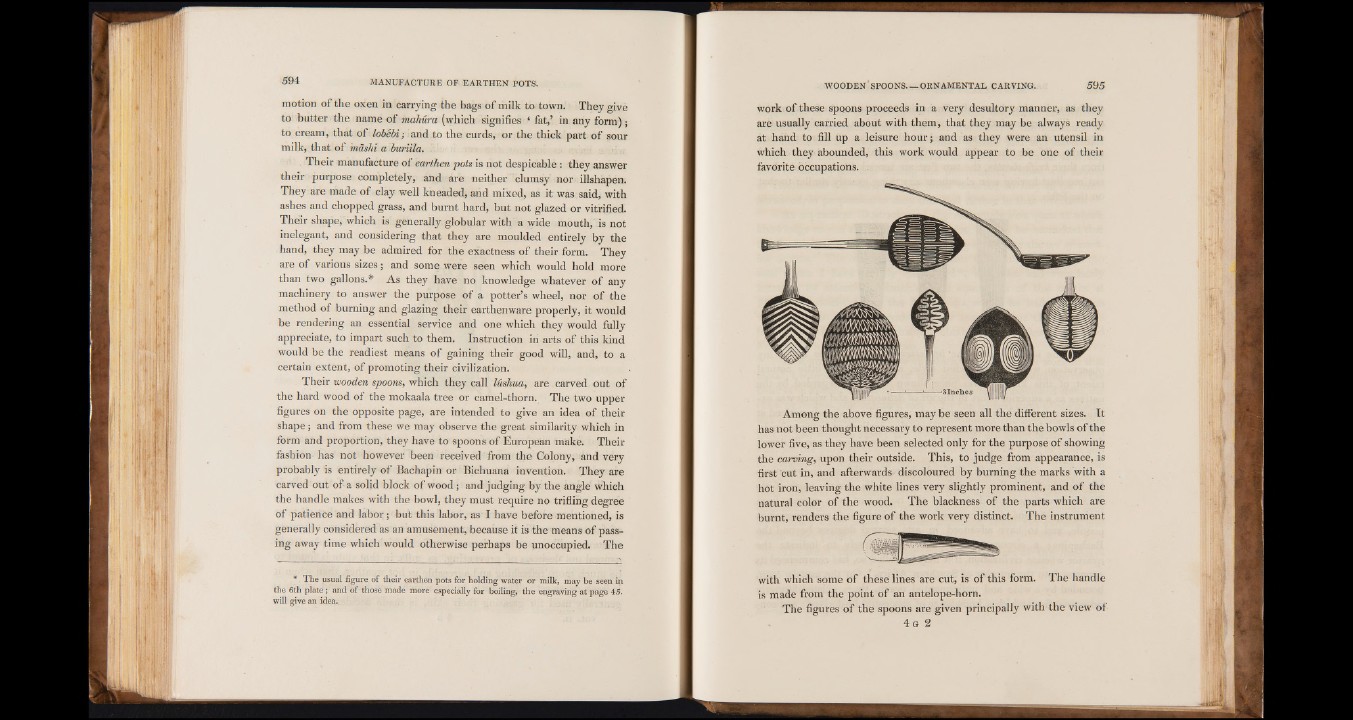
5 94 MANUFACTURE OF EARTHEN POTS.
motion of the oxen in carrying the bags of milk to town. They give
to butter the name of mahtira (which signifies | fat,’ in any form);
to cream, that of lobebi; and to the curds, or the thick part of sour
milk, that of mdshi a buriila. .
Their manufacture of earthen pots is not despicable : they answer
their purpose completely, and are neither clumsy nor illshapen.
They are made of clay well kneaded, and mixed, as it was said, with
ashes and chopped grass, and burnt hard, but not glazed or vitrified.
Their shape, which is generally globular with a wide mouth, is not
inelegant, and considering that they are moulded entirely by the
hand, they may be admired for the exactness of their form. They
are of various sizes; and some were seen which would hold more
than two gallons.* As they have no knowledge whatever of any
machinery to answer the purpose of a potter’s wheel, nor of the
method of burning and glazing their earthenware properly, it would
be rendering an essential service and one which they would fully
appreciate, to impart such to them. Instruction in arts of this kind
would be the readiest means of gaining their good will, and, to a
certain extent, of promoting their civilization.
Their wooden spoons, which they call lushua, are carved out of
the hard wood of the mokaala tree or camel-thorn. The two upper
figures on the opposite page, are intended to give an idea of their
shape; and from these we may observe the great similarity which in
form and proportion, they have to spoons of European make. Their
fashion has not however been received from the Colony, and very
probably is entirely of Bachapin or Bichuana invention. They are
carved out of a solid block of wood; and judging by the angle which
the handle makes with the bowl, they must require no trifling degree
of patience and labor; but this labor, as I have before mentioned, is
generally considered as an amusement, because it is the means of passing
away time which would otherwise perhaps be unoccupied. The
*. The usual figure of their earthen pots for holding water or milk, may be seen in
the 6th plate ; and of those made more especially for boiling, the engraving at page 45.
will give an idea.
WOODEN SPOONS ORNAMENTAL CARVING. 5 9 5
work of these spoons proceeds in a very desultory manner, as they
are usually carried about with them, that they may be always ready
at hand to fill up a leisure hour; and as they were an utensil in
which they abounded, this work would appear to be one of their
favorite occupations. .
Among the above figures, may be seen all the different sizes. It
has not been thought necessary to represent more than the bowls of the
lower five, as they have been selected only for the purpose of showing
the carving, upon their outside. This, to judge from appearance, is
first cut in, and afterwards discoloured by burning the marks with a
hot iron, leaving the white lines very slightly prominent, and of the
natural color of the wood. The blackness of the parts which are
burnt, renders the figure of the work very distinct. The instrument
with which some of these lines are cut, is of this form. The handle
is made from the point of an antelope-horn.
The figures of the spoons are given principally with the view of
4 g 2